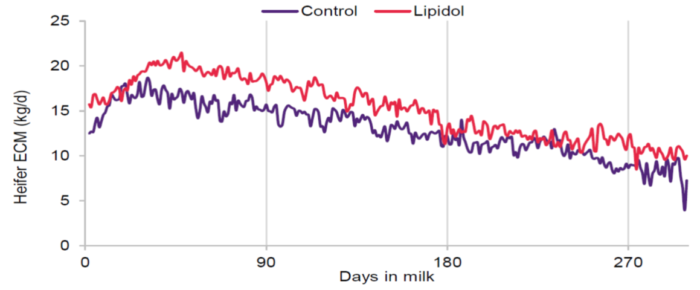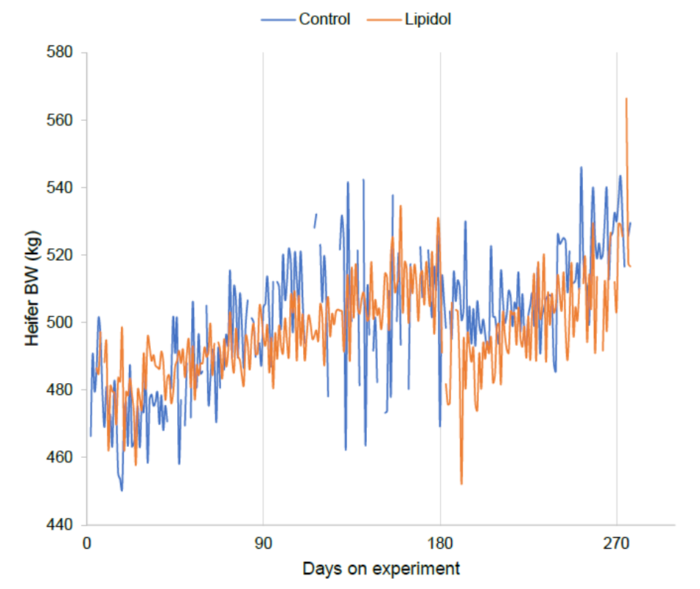Background:
Digestion is a 2-step process. First, ingested feed materials are broken down into readily absorbable nutrients by digestive enzymes. Absorption completes digestion and agents that can facilitate this process are just as important as digestive enzymes. Lysophospholipids (LPLs) are derivatives of phospholipids in which one of the fatty acid tails has been removed by hydrolysis and major components of cell membrane bi-layer are phospholipids. Due to their key functionalities in the cellular membrane, LPLs have been extensively studied and scientifically proven to positively affect nutrient absorption through various methods, including partial changes to the membrane structure, stimulation of protein channels, and modulation of membrane fluidity.
Lipidol® Ultra: a powerful combination of four functional LPLs
Lipidol® Ultra is composed of four different functional lysophospholipids including lysophosphatidylcholine (LPC), lysophosphatidylionsitol (LPI), lysophosphatidylethanolamine (LPE), and lysophosphatidic acid (LPA), as well as hydrolysed soya lecithin and calcium silicate as its carriers.
Benefits of Lipidol® Ultra include
- Lipidol® Ultra accelerates cellular nutrient absorption, thereby enhancing livestock performance.
- Synergic effects of Lipidol® Ultra and enzyme products can provide additional cost savings in feed formulation through complete digestion.
- Lipidol® Ultra minimizes nutrient and energy loss from feed, hence enabling an eco-friendly and sustainable production in farm and feed businesses.
Objective:
To validate the performance of Lipidol® Ultra in a dairy heard by evaluating additional milk and milk component yields.
Experiment:
Trial Period: The summer starting 1/11/2020 through until 4/4/2021
Trial Heard: Mixed Lactation all year-round calving.
Location: Kyogle, NSW
Dairy:
Robotic dairy that includes two feed heads to be able to deliver the control grain concentrate or Lipidol® Ultra treated grain concentrate. Grain delivered during milking, amount grain delivered individually recorded for each animal as was volume/content of milk, fat, and protein. The robot also recorded animal weights during milking. All data is linked to the electronic ear tag worn by each animal.
Grain Concentrate and Feed:
Cows are fed grain concentrate (18% CP, 12.64 MJ/Kg ME) plus pasture or cereal hay ad-lib. Lipidol® Ultra was initially added at 2g per kg of concentrate, from 01 Nov 2020 to 27 Jan 2021 (87 days). After 28 Jan 2021, the dosage was increased to 3.3 g per kg of concentrate. The grain is dispensed to each animal based on her days in milk and the previous days production volume.
Animal Grouping into Control or Treatment:
The trial started on 01 Nov 2020 with 37 Heifers in multiple stages of lactation. Animals within the heard were assigned randomly into either control or treatment based on – Age, DIM and Production and that the group daily production was within 200mls between groups. Fresh cows continued to be added to the trial until the end of the trial such that numbers were equal for each group on 30/03/2021 (total of 149 days).
Milk production data were analysed as a randomized block design with repeated measures in time, using the MIXED procedure of SAS. The model included the fixed effects of treatment (with or without Lipidol® Ultra; 1 DF), and the random effects of block (3 DF) and animal within treatment as the experimental unit. Days in milk (DIM) was included as repeated measures with CS as the covariance structure. The degrees of freedom and tests were adjusted by the Kenward-Roger option, Lipidol® Ultra effects were compared using Fisher’s least significant difference (option DIFF from LSMEANS) and significance declared at P ≤ 0.05 and trends at P ≤ 0.10.
The average daily gain was determined by regressing BW with days in milk for each animal and analysed as a randomized block design using the MIXED procedure of SAS. The model will include the fixed effects of treatment (with or without Lipidol® Ultra; 1 DF) and the random effect of block (3 DF). The degrees of freedom and tests were adjusted by the Kenward-Roger option and LY effects compared as described above.
Results:
Effect of Lipidol® on Heifers
As shown in both Table 2 and Figure 1, Lipidol® increased ECM of heifers.
Table 1 Statistical Analysis of the Effect of Lipidol on ECM of Heifers
| Type 3 Tests of Fixed Effects | ||||
| Effect | Num DF | Den DF | F Value | Pr > F |
| Period | 2 | 32 | 22.38 | <0.001 |
| Trt | 1 | 35.3 | 7.61 | 0.009 |
| Trt*Period | 2 | 32 | 1.51 | 0.235 |
Figure 1 Effect of Lipidol on the ECM Yield on Heifers
Summary of Lipidol® effects on milk yield
Supplementation with Lipidol® significantly increased ECM yield in heifers by 19% p= 0.009 (15.5 vs 13.0 kg ECM/d). Consequently, Fat and Protein yields were also increased by 22 p= 0.009 and 16% p= 0.037, respectively (0.60 vs 0.49 kg Fat/d; 0.52 vs 0.45 kg Protein/d).
Table 2 Milk and Solids Yield in Animals Supplemented or not with Lipidol
| Early Lactation | Mid Lactation | Late Lactation | |||||||
| Items | Control | Lipidol | Control | Lipidol | Control | Lipidol | SEM | Trt | Trt*Period |
| Heifers | |||||||||
| ECM, kg/d | 14.9b | 18.3a | 12.9b | 15.7a | 11.3 | 12.4 | 0.79 | 0.009 | 0.235 |
| Fat, kg/d | 0.51b | 0.66a | 0.49b | 0.62a | 0.47 | 0.53 | 0.03 | 0.009 | 0.244 |
| Protein, kg/d | 0.55b | 0.63a | 0.44b | 0.53a | 0.37 | 0.4 | 0.03 | 0.037 | 0.325 |
| a,bMeans with different subscripts within a lactation period differ at P < 0.05 | |||||||||
Lipidol® effects on body weight change
Body weight was automatically recorded during the trial. After cleaning the data from inconsistent values, it was possible to visualise BW change through lactation (Figure 2). It is important to highlight that there were different animals at different lactation periods, which complicates the analysis. For this reason, BW change was calculated separately for each lactation period.
Figure 2 Effect of Lipidol on the Body Weight of Animal Classes During Lactation
Table 3 Average Daily Gain During Three Lactation Periods for Supplemented or Not with Lipidol
| Early Lactation | Mid Lactation | Late Lactation | ||||
| Items | Control | Lipidol | Control | Lipidol | Control | Lipidol |
| ADG1 (kg/d) | ||||||
| Heifers | 0.335a | 0.161b | 0.034b | 0.249a | 0.316 | 0.406 |
| 1 ADG was calculated from linear regression of BW over days in milk for each lactation period | ||||||
Conclusion:
Supplementation with Lipidol® Ultra significantly increased energy-corrected milk by 2.5 kg/d (+19% p= 0.009) throughout lactation (+375 kg ECM per animal) in first lactation heifers. This resulted in an increase in fat (+ 110 g/d p= 0.009) and protein (+ 70 g/d p= 0.037) yields as well. Despite this increase in milk production there was no negative effect to the growth of the Lipidol group. In fact, the control ADG average over all of lactation was 228g/day and 272g/Day for the Lipidol treated group.



